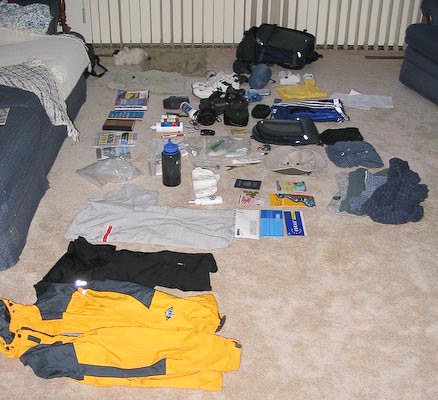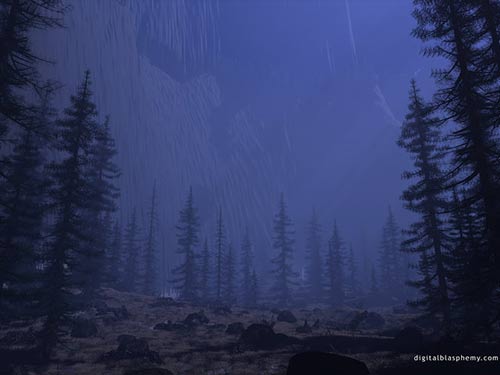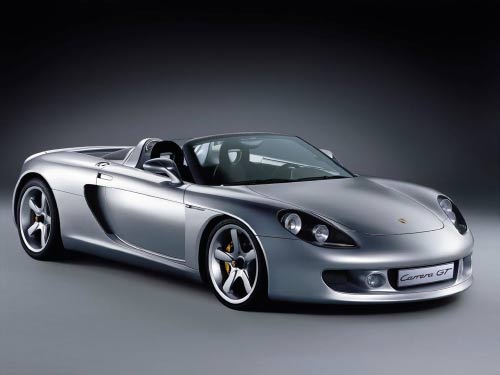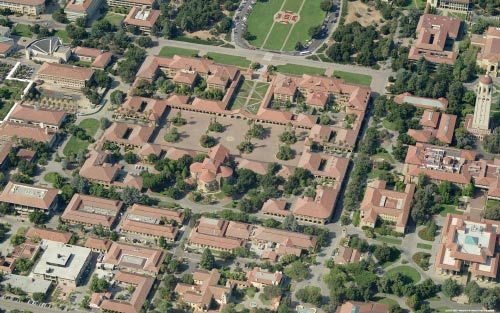Let’s go exploring
I first met myself — or more precisely, the person I was to become — not long after arriving at Rose-Hulman in 2000. It was the beginning of a grand adventure, one that would present the opportunities and motivations for me to reinvent my identity and my outlook on life. I’d vaguely wanted to change some things about myself for a while, but I never really got around to it. The act of moving to a new state, full of the unknown, provided the necessary motivation.
Adventure. Yes, life is (or should be) a series of adventures held together by the glue of time. Said another way, adventures beget stories, and the human existence is defined by our stories. Man was not meant to grow complacently content.
It was not coincidental that my arrival at Rose was preceded by a road trip. Not the insane, heavy-drinking blast from the movies, mind you, but a significant 610 mile drive nonetheless.
Many other trips followed during college. Visits to Chicago and St. Louis. Skiing in Colorado. Top-speed runs, pushed by youthful stupidity and limited only by engine governors, to Indianapolis, Cincinnati, and West Virginia. Dozens of treks between Minnesota and Indiana. A first trip abroad, to Paris, France. I found and nurtured a love of travel.
Going to California for grad school was as much about the adventure of living in Silicon Valley as it was about getting an advanced degree. It, too, was preceded by years of preparation, days of driving, and another dose of personal reinvention. I loved it.
Now I am enjoying the adventure of entrepreneurship. I am on the frontier of my soul, pushing forward the state of the art and learning how to become truly self-sufficient. The goal is to be beholden to no one and nothing but my own ethics. I’m not there yet, but I’m enjoying the drive. I am more passionate than ever about solving my chosen problem — the ubiquity of blurry photos — and my movement beyond “the dip” make me confident that the dream is attainable.
Still, over the past month or so the itch has grown to have another traveling adventure. Another grand tour, perhaps, to echo the one I took six years ago around Western Europe. The urge boiled over into giddy excitement last night, and instead of sleeping, I took to doing research and sketching potential routes. The one holding the greatest appeal is deliciously high concept:
“Epic North American road trip.”
Long-time readers of this blog might recognize this desire as nothing new. The seed was planted years ago by Grandstaff; or more specifically, by his compelling written documentation [Updated: Now using the archive.org capture; see the summer of 2003 in particular] of his trip around the United States. The spark that jolted the dream back to life came from a far less noble source: the 2010 Kia Sorento Superbowl commercial. (Inspiration comes from strange places.)
Ok, so what exactly does an “epic North American road trip” entail? Three main goals:
- Visit all 50 American states and 10 Canadian provinces
- Play hockey in each of those states and provinces
- Accomplish all of the travel by driving (except for Hawaii, of course)
Why? Well, to the extent supported by my limited research, it appears that such a feat has never been accomplished. There are guys who have run marathons in every state, a guy who is trying to visit every Starbucks location in the world, and lots of people who try to see every stadium for their favorite major-league sport. I’ve had a long-time desire to play a game of hockey in the birthplace of hockey (i.e, Canada), so playing in every province and every state seems like a reasonable extension.
Potential route
Other lesser goals for the trip include visiting friends, backpacking in national parks, enjoying the regional seasonal produce, taking photos, and writing about everything.
It will be a minimalist adventure. A rough sketch of what I’ll bring:
- Ultralight backpacking gear
- Minimal clothes chosen for maximum utility
- Laptop computer with wireless broadband card
- Cell phone (well, probably three of them: an American one, a Canadian one, and a satellite one)
- DSLR camera
- Basic tools and emergency supplies
- Road bike (maybe — that might have to be saved for a future trip)
- Hockey gear
That last item really constrains my vehicle options. Everything else (well, besides the bike) is small enough that I could probably get away with a sports car.

This is all I brought to Europe when I was there for a month
Part of me wants to do this with the wrong vehicle, or at least with one that adds character. If I were shooting for the “proper” vehicle, the choice would be easy: Toyota Land Cruiser. The Land Cruiser is kind of like a Land Rover, except being Japanese instead of British, it doesn’t break down all the time. It is, apparently, the go-to vehicle for harsh operating conditions in the most remote corners of the world. Since my main concern would be not getting stranded in the middle of Canada or Alaska, I can be a bit more liberal with my selection.
Maybe an Outback? Maybe my current Outback? Perhaps a sports sedan would be better. The BMW M5 would be a classy Gumball-esque choice, and it would be large enough for another person if I found somebody else up for a crazy doing-something-in-every-state trek (not necessarily hockey). Or, if caution is to be thrown to the wind, maybe a sports car like the GT-R really would be the way to go.
Obviously, all of this won’t be cheap. In terms of time, I expect around six months will be necessary for a proper tour. In terms of money, a rough guess might be in the neighborhood of $25,000, excluding the car. I can think of many worse ways to blow a few grand. Plus, with wireless broadband and the ubiquity of WiFi, I could continue working on projects for myself (e.g., Blurity) or for others (e.g., freelancing) while on the road.
Expected start date is July 1, 2011. Let the preparation begin.






Recent Comments